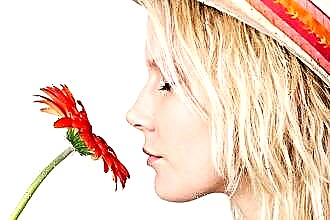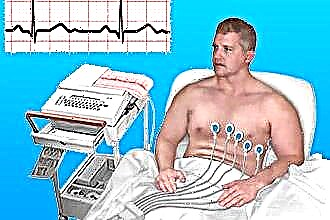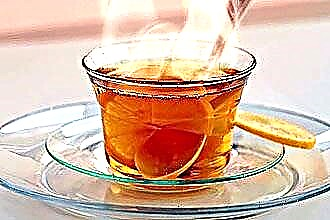Infectious diseases in children are much more common than in adults. This is due to the structural features of the lymphadenoid formations (tonsils), which have a porous structure. The palatine and pharyngeal tonsils play the role of "filters" that eliminate pathogenic bacteria and viruses that penetrate the oropharynx.
 Due to the lack of acquired immunity, pathogenic flora develops in the porous depressions (lacunae) of the glands, provoking inflammation.
Due to the lack of acquired immunity, pathogenic flora develops in the porous depressions (lacunae) of the glands, provoking inflammation.
Treatment of angina in children should be carried out under the supervision of a pediatrician, which is associated with the rapid spread of infectious-allergic inflammation in the mucous membrane of the oropharynx. With an untimely relief of pathological processes, local and systemic complications are often observed due to a reduced resistance of the body and hematogenous spread of infection.
Reason for seeing a doctor
How to treat a sore throat in a child? The effectiveness of therapy for tonsillitis (sore throat) largely depends on the correctness of the diagnosis. There are more than 10 forms of ENT disease, each of which requires an individual approach to the choice of medications for local and systemic action.
It should be noted that acute tonsillitis in children does not manifest itself in the same way as in adults. Due to the reduced reactivity of the body, in preschool children, the symptoms of the disease are poorly expressed. About half of the patients have practically no discomfort in the throat and difficulty swallowing.
The main clinical manifestations of the disease in a small child include:
- loss of appetite;
- subfebrile fever;
- drowsiness;
- lethargy;
- headache;
- nausea;
- specific smell from the mouth;
- enlargement of the cervical lymph nodes.
Important! Late treatment of tonsillitis in children under the age of 1.5 is fraught with the development of croup and death.
If the above symptoms are found, it is necessary to examine the patient's throat for inflammation. If the child really has a sore throat, this will be signaled by hyperemia of the tonsils, swelling of the pharynx, purulent plaque on the back of the throat, etc. If pathological changes are detected in the mucous membranes of the ENT organs, you need to seek help from a specialist.
Patient Care Principles
How can you help your child to ease the course of the disease? If the therapy of an infectious-allergic disease is not carried out in a hospital, the patient must be provided with bed rest for 5-7 days. This approach practically excludes the likelihood of severe complications, which is due to the practical absence of serious loads on the respiratory, urinary and cardiovascular systems.
During the treatment of acute tonsillitis in children under the age of 5 years, the following rules must be observed:
- wet cleaning in the room 2 times a day - ensures the absence of allergens (dust, animal hair), which can aggravate the state of health;
- airing the room 4-5 times a day - helps to eliminate pathogens and enrich the air with oxygen;
- drinking plenty of fluids - prevents dehydration and the retention of toxic substances in the body;
- diet therapy - activates metabolic processes in the body, which has a beneficial effect on the absorption of nutrients and, accordingly, tissue reactivity;
- walks in the air (at the stage of regression of inflammation) - stimulates immune activity, as a result of which the process of destroying pathogens is accelerated.
When following a diet, your doctor will advise you to avoid eating solid food, which is associated with the risk of damage to the mucous membrane of the throat. The destruction of the protective layer of the ciliated epithelium is fraught with the penetration of pathogens deep into the tissues, which can provoke complications.
Features of therapy
How to treat angina in children? When choosing the appropriate methods and methods for treating ENT disease, several important factors are taken into account, namely:
- type of infectious agent;
- phase of development of pathological processes;
- the prevalence of foci of inflammation;
- the presence of systemic and local complications;
- the age of the patient;
- tendency to allergic reactions.
As a rule, the causative agents of infection are bacteria (staphylococcus, streptococcus) and viruses (rhinoviruses, adenoviruses). After receiving the results of bacterial culture from the pharynx, the specialist will be able to determine the main direction of etiotropic therapy, which is aimed at destroying the pathogenic flora in the foci of inflammation. Antiviral and antimicrobial agents are used as drugs of etiotropic action.
To relieve the symptoms of tonsillitis in a young child, the doctor prescribes symptomatic drugs. They allow you to eliminate nasal congestion, allergic manifestations, discomfort in the throat, flushing, fever, etc. The classical treatment regimen for ENT disease involves the use of the following systemic and local drugs:
- antibiotics - destroy pathogenic microbes, which contributes to the regression of inflammation;
 antiviral drugs - destroy pathogenic viruses, thereby eliminating rhinitis, conjunctivitis, swelling of the mucous membranes, etc.;
antiviral drugs - destroy pathogenic viruses, thereby eliminating rhinitis, conjunctivitis, swelling of the mucous membranes, etc.;- rinsing solutions - accelerate the process of eliminating the pathogenic flora in the foci of inflammation, which helps to increase local immunity;
- solutions for inhalation - contribute to the regression of pathological processes and epithelialization of the inflamed tissues of the oropharynx;
- throat sprays and aerosols - disinfect the mucous membrane, which prevents the attachment of fungal flora.
Mixed tonsillitis is more difficult to treat than bacterial, candidal or viral inflammation, which involves the use of broad-spectrum drugs.
It should be noted that the non-modern treatment of angina in a child of viral etiology increases the risk of bacterial flora attachment. A decrease in immune defense caused by intoxication of the body contributes to the reproduction of opportunistic microbes. In small numbers, streptococci and staphylococci inhabit the pharyngeal mucosa. But in the case of a decrease in the reactivity of the body, pathogens begin to multiply actively, which leads to the development of purulent inflammation (follicular and lacunar tonsillitis).
Treatment of a one-year-old child
Therapy of infectious-allergic inflammations in children aged 1 year is carried out in stationary conditions. Due to the increased sensitization of the body, allergic manifestations, such as mucosal edema, inflammation and hyperemia, can cause serious complications. To prevent a deterioration in the patient's well-being, treatment is carried out under the supervision of a specialist.
How to quickly cure a sore throat in a small child?
 Antibiotics (penicillins, macrolides) and sulfonamides are chosen as drugs of etiotropic action. Due to the risk of developing allergic reactions, drugs are administered exclusively parenterally, i.e. in the form of intravenous or intramuscular injection. This prevents irritation of the gastric mucosa and the appearance of intestinal syndrome. The full course of antibiotic therapy should be at least 5-7 days. To eliminate hyperemia, nasal congestion and other allergic manifestations, symptomatic drugs are used - antipyretics and antiallergic drugs.
Antibiotics (penicillins, macrolides) and sulfonamides are chosen as drugs of etiotropic action. Due to the risk of developing allergic reactions, drugs are administered exclusively parenterally, i.e. in the form of intravenous or intramuscular injection. This prevents irritation of the gastric mucosa and the appearance of intestinal syndrome. The full course of antibiotic therapy should be at least 5-7 days. To eliminate hyperemia, nasal congestion and other allergic manifestations, symptomatic drugs are used - antipyretics and antiallergic drugs.
Since a one-year-old child is not yet able to take tablets and lozenges for sucking, treatment is carried out using suspensions (for drinking solutions) and rectal suppositories.
Medication Review
How to cure a sore throat in a child? Methods and methods of treating children are determined by etiological factors in the development of pathology. Systemic therapy of ENT disease is based on the intake of antimicrobial and antiviral drugs. Symptoms can be relieved with antihistamines, antipyretics, topical antiseptics, and nasopharyngeal lavage solutions.
The conservative treatment regimen for tonsillitis usually includes:
- penicillins and macrolides ("Phenoxymethylpenicillin", "Zitrolil") - destroy most gram-positive and gram-negative bacteria; are used in the treatment of uncomplicated forms of ENT diseases of the upper respiratory tract;
- antifungal drugs ("Nystatin", "Amphotericin B") - inhibit the activity of mold and yeast-like fungi, which prevents the development of candidal tonsillitis;
- antiviral agents ("Viferon", "Kipferon") - interfere with the synthesis of viral RNA, as a result of which the number of virions in the foci of inflammation decreases;
- antipyretics ("Paracetamol", "Tylenol") - normalize the hypothalamus, thereby increasing heat exchange with the environment;
- antihistamines (Parlazin, Erius) - interfere with the synthesis of prostaglandins and cyclooxygenase, which contributes to the regression of catarrhal processes and edema;
- solutions for rinsing the nose ("Salin", "Aqua MARis") - cleanse the nasopharyngeal mucosa from pathogenic secretions and eliminate puffiness, thereby facilitating nasal breathing.

Complicated by pharyngitis, sinusitis and otitis media, tonsillitis is treated with cephalosporin antibiotics, which are active against most strains of bacteria.
Childhood imposes some restrictions on the use of drugs of symptomatic and etiotropic action, which is due to a tendency to allergies, sensitivity of the gastrointestinal tract and the inability of children to hold their breath. Despite this, topical preparations such as aerosols and sprays can be used to treat the mucous membrane of the oropharynx, but only taking into account some of the nuances. To eliminate the likelihood of laryngospasm, aerosols are sprayed not on the palatine tonsils, but on the inner surface of the cheeks.
Treatment of children 4-5 years old
How to cure a sore throat within a few days? Angina is a recurrent disease that can cause serious complications. To reduce the likelihood of developing rheumatic heart disease, pyelonephritis, meningitis, encephalitis and other severe pathologies, the principles of treatment must be agreed with the pediatrician.
Children aged 4 years and older are able to gargle, suck lozenges and inhale, which can significantly increase the range of drugs used. At the initial stages of the development of ENT disease, it is advisable to use sulfonamides. Drugs in this category are resistant to most common infectious agents. They prevent the development of systemic diseases associated with damage to the kidneys, heart, liver, joints, etc.
Important! Late and ineffective treatment of pathology is fraught with chronicity of catarrhal processes and the development of chronic tonsillitis.
 Treatment of acute tonsillitis at the stage of purulent inflammation is carried out with antibacterial drugs.
Treatment of acute tonsillitis at the stage of purulent inflammation is carried out with antibacterial drugs.
Penicillins are included in the initial treatment regimen, but they often provoke allergic reactions. If necessary, they are replaced with macrolides or cephalosporins. The easiest way to treat is uncomplicated angina in a child. Treatment can be carried out with local antibiotics, which include Bioparox, Grammidin, Septolete Neo, etc.
Features of pharmacotherapy
One of the most unpredictable ENT diseases of an infectious nature is angina in children. Treatment of the disease should be carried out only under the supervision of a specialist, which is associated with the risk of developing systemic complications within 3 weeks after regression of pathological processes. To make sure that there are no serious illnesses, from time to time the child must pass standard tests to determine the number of leukocytes in the blood, the erythrocyte sedimentation rate, protein in the urine, etc.
What to do if you find typical symptoms of the disease? First of all, you need to undergo differential diagnosis with a pediatrician. Symptoms of an infectious disease are similar to the clinical manifestations of diphtheria, which should be taken into account. Therapy of diseases has fundamental differences, therefore, self-treatment of tonsillitis in children can only result in a deterioration in health.
How to cure tonsillitis in a 4-year-old child? From the age of 4 years, physiotherapeutic procedures are included in the conservative therapy of an infectious-allergic disease, such as sanitation of the oropharynx, inhalation with a nebulizer, etc. However, it should be taken into account that in order to eliminate the pathogenic flora in the throat and tonsils, it is not enough to use symptomatic drugs. It is imperative to include antibiotics in the treatment regimen.
Medication Review
What remedy will help eliminate pathogens? When choosing antibacterial drugs, penicillins are initially preferred, due to their high resistance to streptococci. In the case of chronic inflammation, children at the age of 4 are prescribed drugs with clavuanic acid. In the presence of an allergic reaction to penicillins, the specialist prescribes macrolides and cephalosporins.
 Recovery can be helped with topical medications such as sprays, rinses, topical antibiotics, etc. Antiseptics and immunostimulants not only eliminate the symptoms of tonsillitis, but also prevent relapses of the disease. With angina in a child, such types of medicines as:
Recovery can be helped with topical medications such as sprays, rinses, topical antibiotics, etc. Antiseptics and immunostimulants not only eliminate the symptoms of tonsillitis, but also prevent relapses of the disease. With angina in a child, such types of medicines as:
- antibiotics - Flemoxin Salyutab, Ekoklav, Hemomycin;
- antihistamines - Fenistil, Peritol, Tsetrin;
- immunostimulants - "Valtsik", "Laferobion", Revamir ";
- vitamins - "Alphabet", "Tsetrum", "Aevit";
- antipyretics - Efferalgan, Tsefekon, Nimesulide;
- rinsing solutions - "Iodinol", "Furacilin", "Stopangin";
- sprays (aerosols) - "Tantum Verde", "Hexasprey", "Faringosept";
- lozenges - "Lizobakt", "Falimint", "Strepsils".
If a 5-year-old child complains of flatulence and abdominal pain, in 90% of cases this indicates the development of dysbiosis. In order to normalize the intestinal microflora, it is advisable to take probiotics when undergoing antimicrobial therapy. They contribute to an increase in the number of lactobacilli in the intestine, thereby increasing the body's resistance to pathogens. The safest remedies include Acipol, Enterol, Bifikol and Bifiform Forte.

 Important! Late treatment of tonsillitis in children under the age of 1.5 is fraught with the development of croup and death.
Important! Late treatment of tonsillitis in children under the age of 1.5 is fraught with the development of croup and death. antiviral drugs - destroy pathogenic viruses, thereby eliminating rhinitis, conjunctivitis, swelling of the mucous membranes, etc.;
antiviral drugs - destroy pathogenic viruses, thereby eliminating rhinitis, conjunctivitis, swelling of the mucous membranes, etc.;

